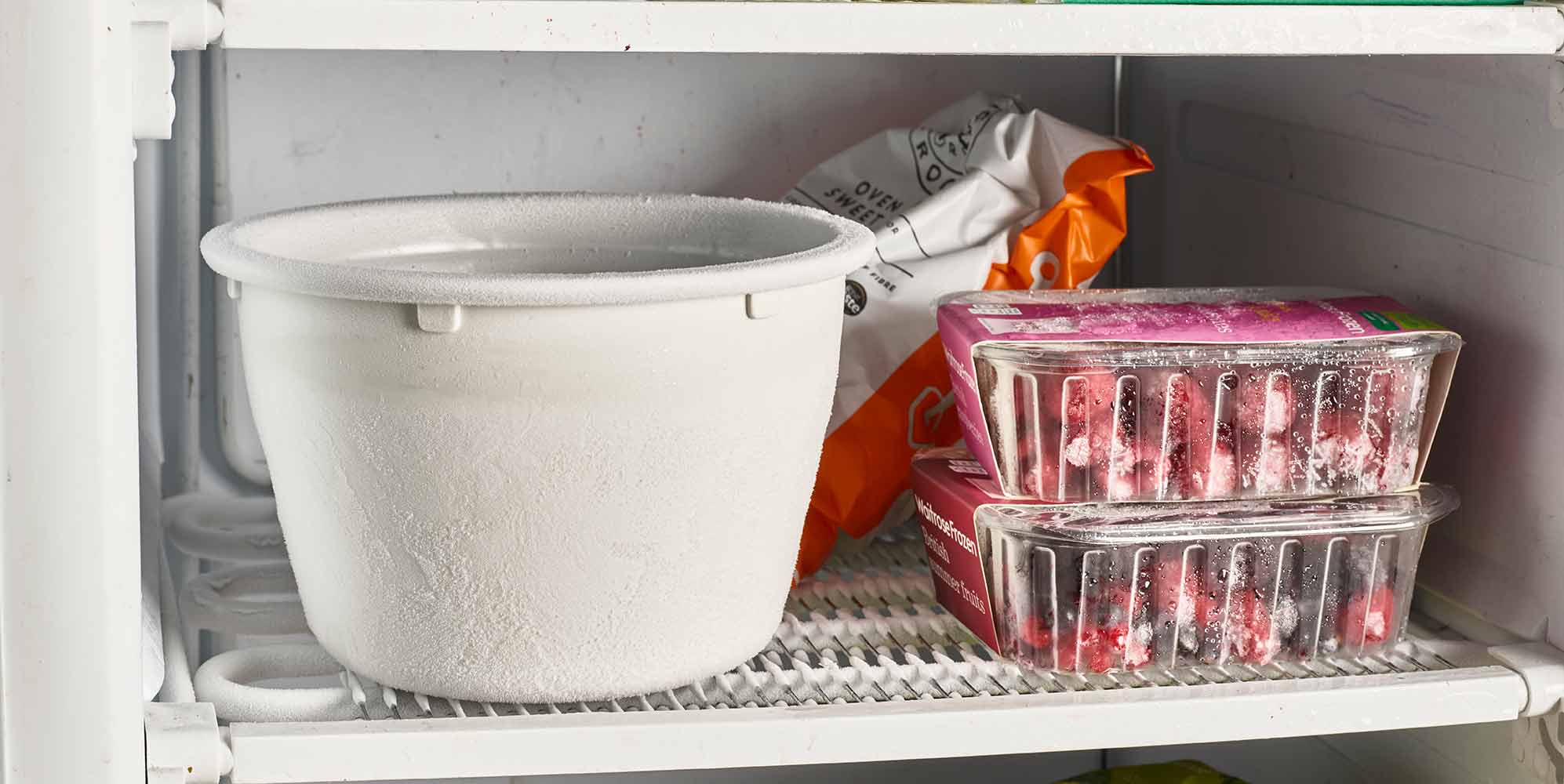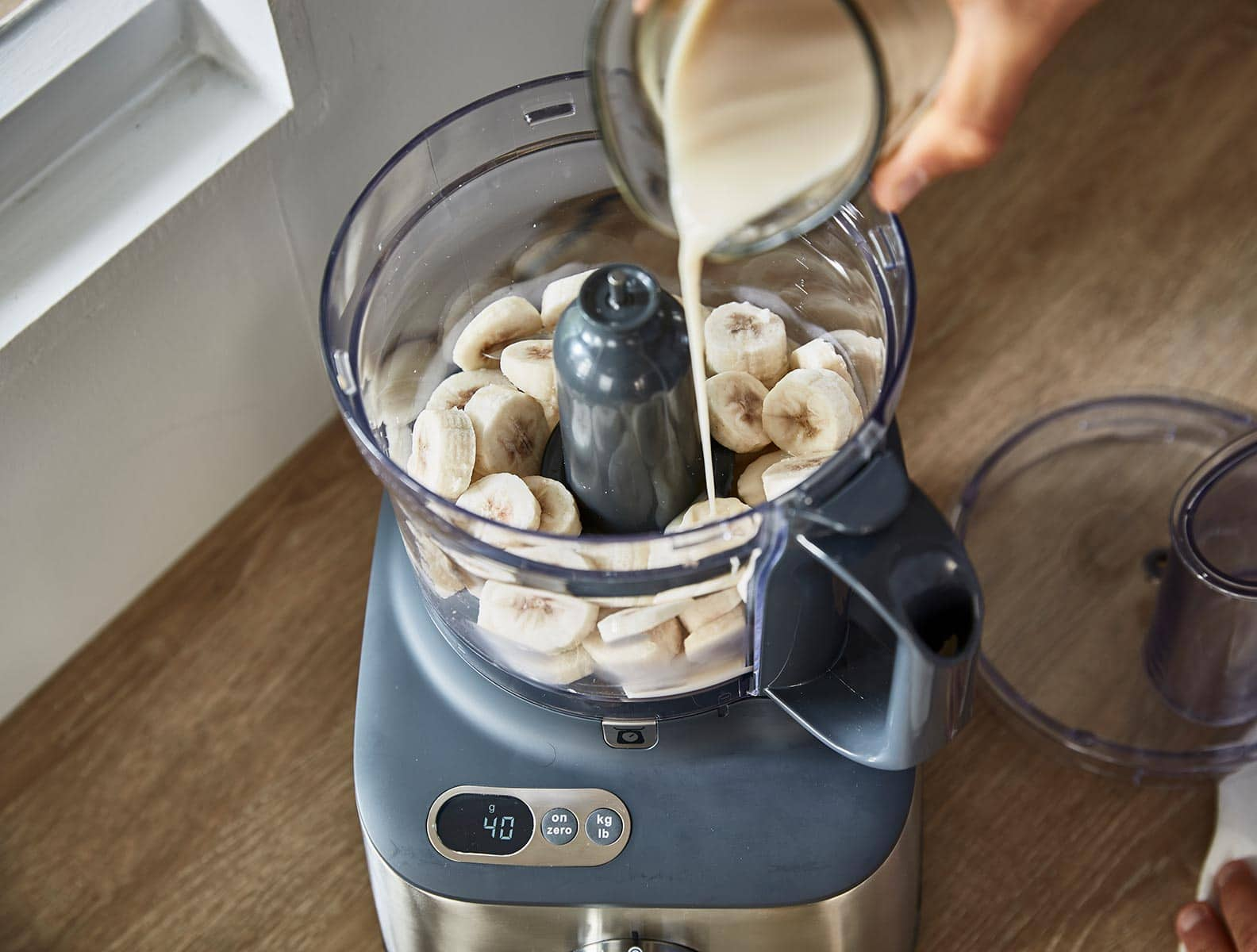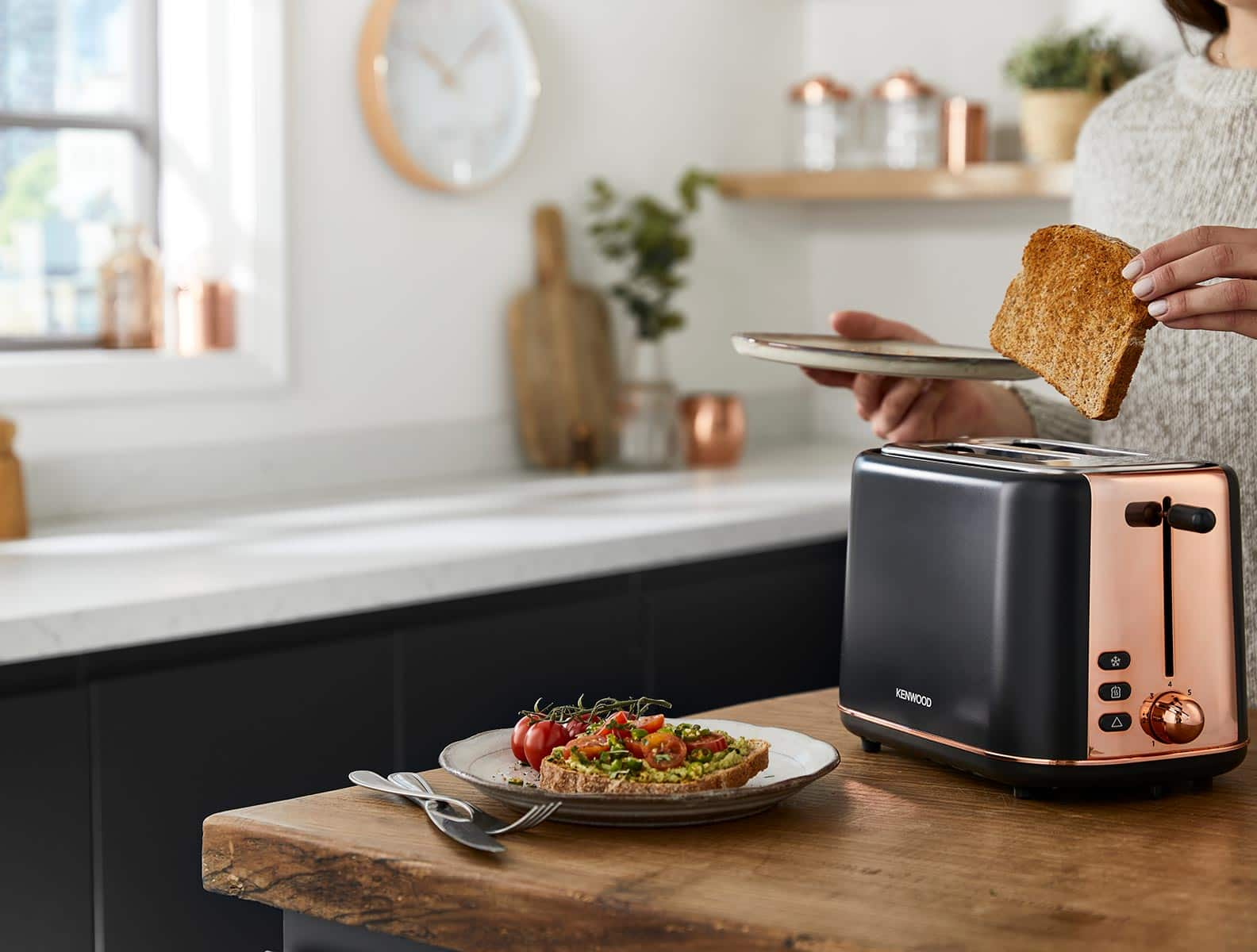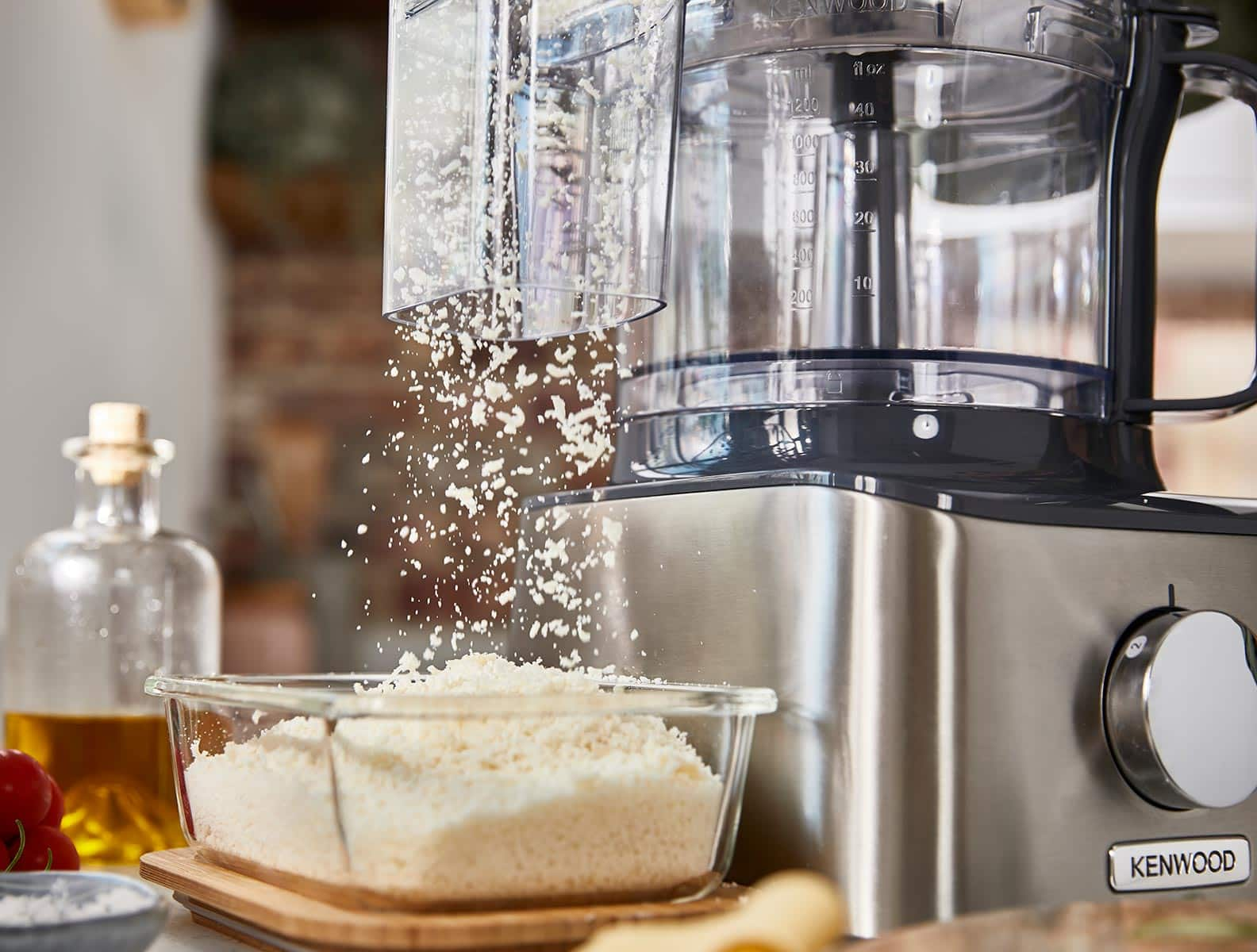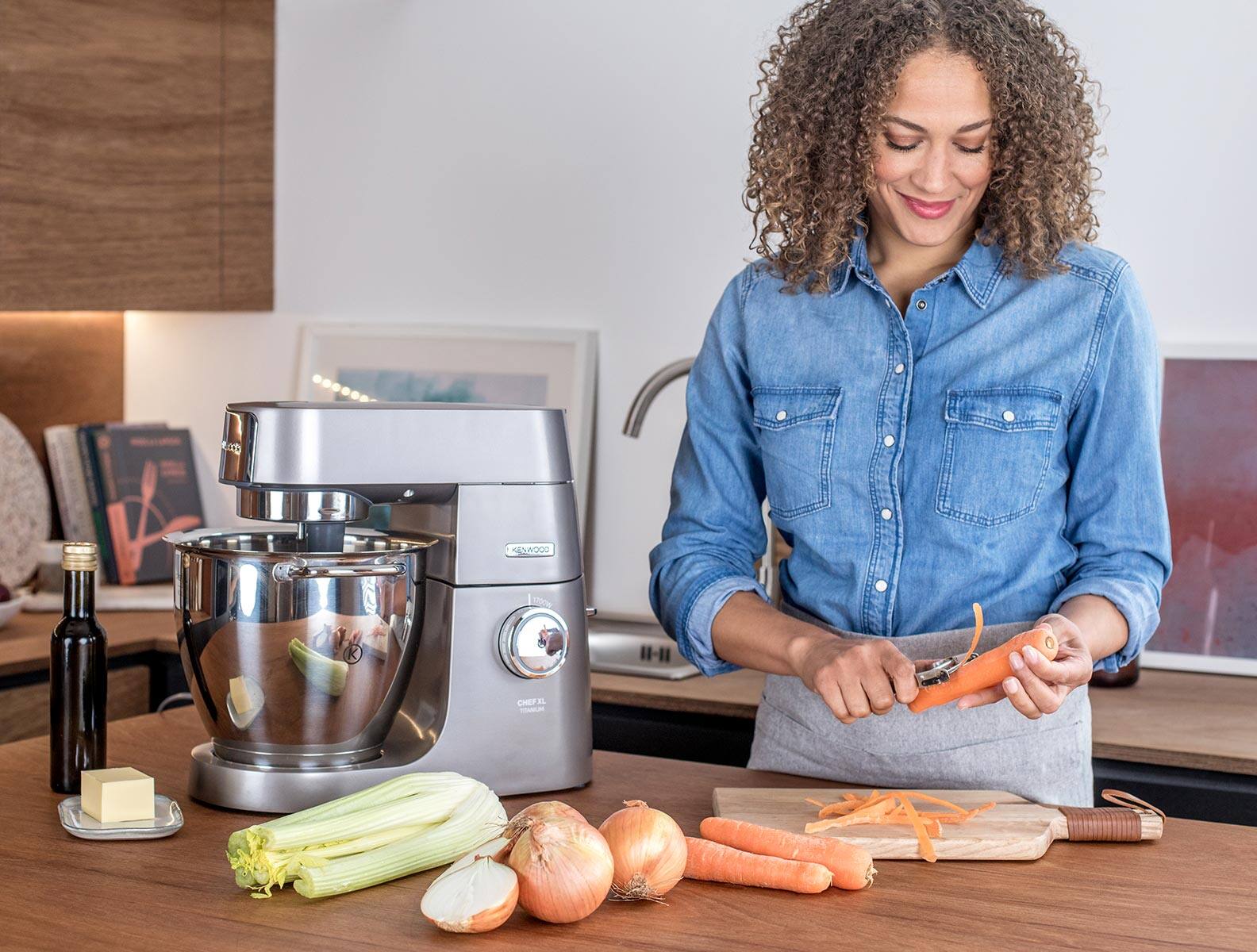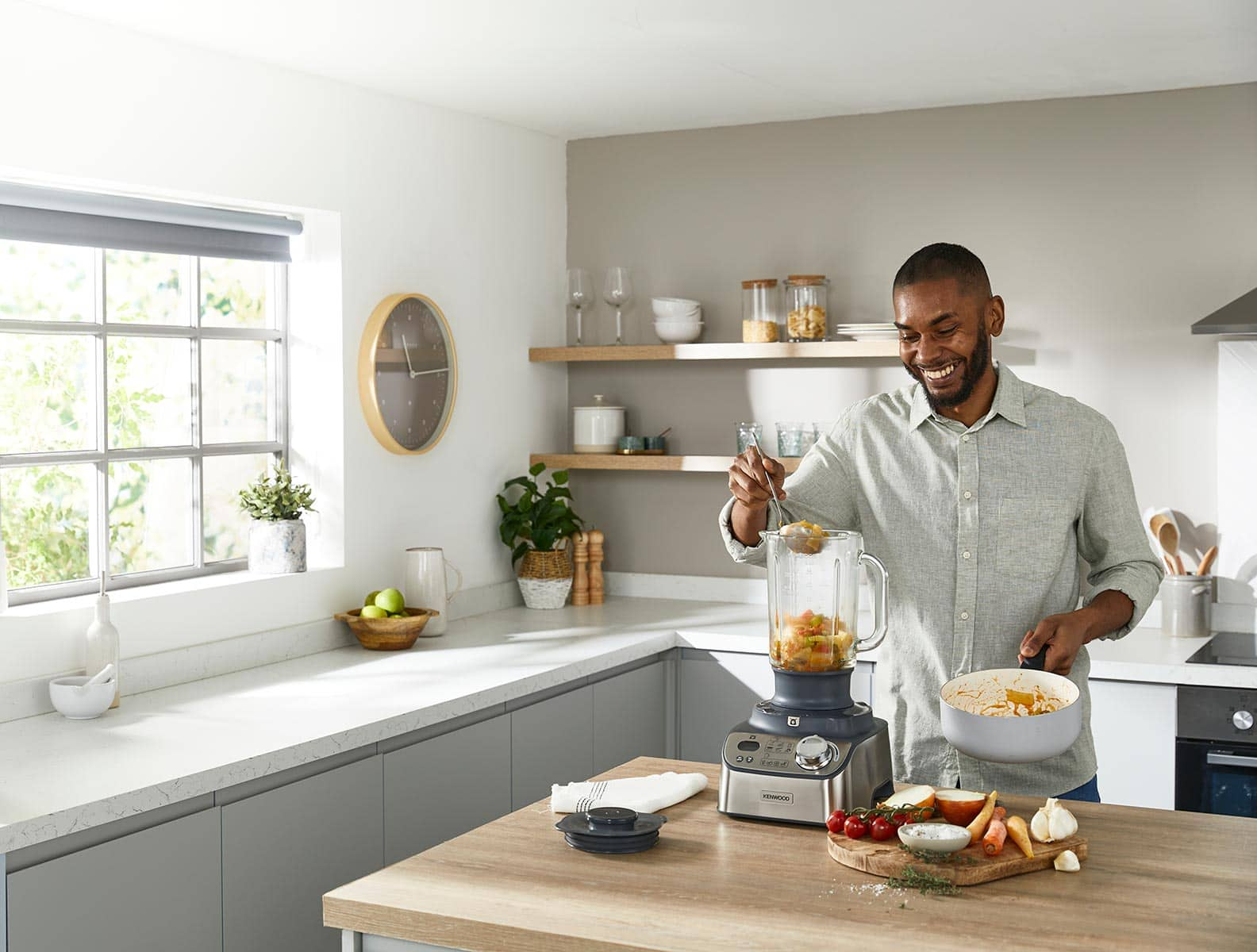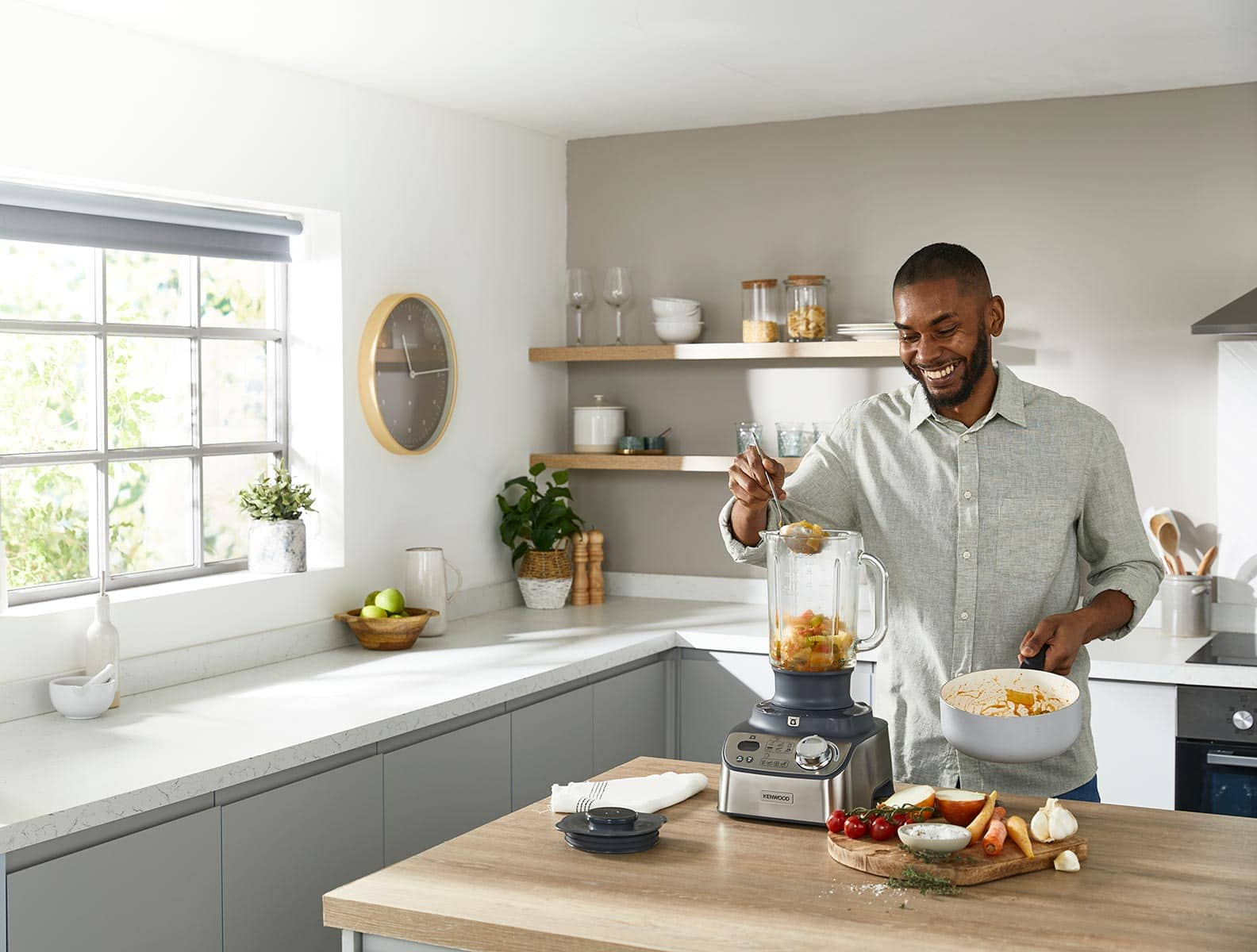Groenten en fruit zijn bevroren net zo voedzaam als vers, dus wees niet terughoudend als het om het invriezen gaat.
Als je hebt overschat wat je nodig hebt of als je simpelweg geen tijd hebt gehad om je verse groenten en fruit te gebruiken, hak ze dan in stukjes en stop ze in de vriezer. Zakken diepgevroren groenten en fruit kopen in de supermarkt is ook een briljante manier om verspilling tegen te gaan, omdat je voor elk recept alleen gebruikt wat je nodig hebt.
Diepgevroren groenten zoals erwten, bonen, wortelen, spinazie of verse kruiden kunnen direct vanuit de vriezer worden gebruikt in een scala aan maaltijden, en fruit zoals banaan, mango, aardbeien en frambozen vormen een uitstekende basis voor smoothies, zelfgemaakt ijs en sorbets.
Een slimme manier om de overgebleven pulp van sappen te gebruiken, is door het toe te voegen aan ijsblokjesbakjes met water voor een verfrissende toevoeging aan je drankje - komkommer, appel of gember werken allemaal goed.
